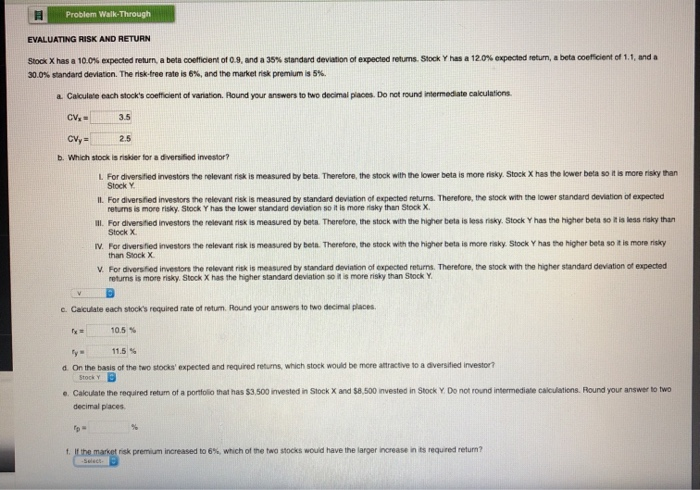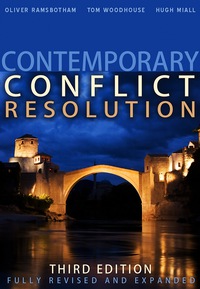e and f please

Problem Walk-Through EVALUATING RISK AND RETURN Stock X has a 10.0% expected return, a beta coefficient of 0.9, and a 35% standard deviation of expected retums. Stock Y has a 120% expected return, a beta coefficient of 1.1, and a 30.0% standard deviation. The risk tree rate is 6%, and the market risk premium is 5% a. Calculele each stock's coefficient of variation. Round your answers to two decimal places. Do not found intermediate calculations. CV, 25 b. Which stock is rider for a diversified investor? L For diversified investors the relevant risk is measured by bets. Therefore, the stock with the lower beta is more risky Stock X has the lower belastis more risky than Stock IL For diversified investors the relevant risk is measured by standard deviation of expected returns. Therefore, the stock with the lower standard deviation of expected returns is more risky. Stock Y has the lower standard deviation so it is more sky than Stock X III. For diversified investors the relevant risk is measured by beta. Therefore, the stock with the higher beta is less risky. Stock Y has the higher beta so it is less risky than Stock X. IV. For diversified investors the relevant risk is measured by bete. Therefore, the stock with the higher beta is more risky Stock Y has the higher beta so it is more risky than Stock X V. For diversified investors the relevant risk is measured by standard deviation of expected returns. Therefore, the stock with the higher standard deviation of expected returns is more risky. Stock X has the higher standard deviations is more risky than Stock Y c. Calculate each stook's required rate of retum. Round your answers to two decimal places 105 11.5 d. On the basis of the two stocks' expected and required returns, which stock would be more attractive to a diversified investor .. Calculate the required retum of a portfolio that has 53,500 invested in Stock X and $8,500 invested in Stock y Do not round intermediate actions. Round your answer to two decimal places 1. the m etrisk premium increased to 6%, which of the two stocks would have the larger increase in its required return








